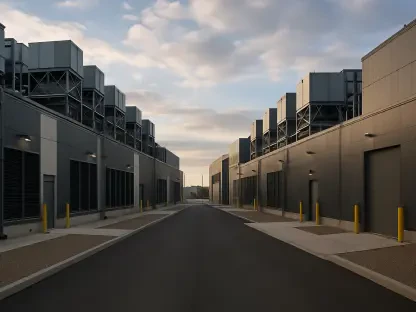Montgomery County’s solar pilot program has achieved significant traction in an unpredictable market environment, defying expectations in an industry currently grappling with reduced demand. Its success illuminates promising pathways for communities confronting broader economic hurdles, against a backdrop of fluctuating federal incentives and policy changes that have traditionally influenced solar adoption.
Changing Landscape: Market Contraction Amid Policy Uncertainty
The residential solar market in the U.S. has faced considerable volatility, driven by the ebb and flow of federal incentives and policy shifts. Recent years have seen notable contractions, as the once stable market now contends with policy proposals such as the early phase-out of significant solar tax credits. This contraction—a 31% decline over the past year—poses challenges to solar investments, threatening their sustainability. Understanding these dynamics reveals how federal tax credits have historically propelled solar adoption, yet their uncertain future necessitates innovative local interventions to sustain growth.
Success Amidst Strife: Financing and Collaboration Culminate in Triumph
Montgomery County’s solar initiative presents a compelling case of success against a struggling industry backdrop. The program’s innovative financing model, developed by local stakeholders, lies at the heart of this triumph. It comprises extended loan terms and minimal fees, designed to mitigate common barriers to solar energy adoption. This structure encourages a broader demographic, increasing accessibility and affordability while boosting consumer confidence and positioning Montgomery County as a leader in sustainable energy solutions.
Strategic Partnerships Propel Adoption
Beyond financing models, strategic collaborations with organizations like Montgomery County Green Bank and the fintech platform OneEthos enrich the program’s appeal. These partnerships offer subsidized rates to low-income households, removing cost impediments and fostering greater inclusivity. Such alliances underscore how financial collaboration can catalyze widespread solar adoption amidst economic uncertainties. These partnerships showcase opportunities for mutual benefits among municipalities and banks, underscoring how renewable energy adoption can thrive even in fiscally challenging times.
Consumer Behavior and Regional Factors
Rising regional energy prices create a unique environment for solar innovation, prompting consumers to reevaluate energy choices. Incremental local electricity rate hikes drive residents toward alternative energy solutions such as solar installations, altering consumer behavior patterns. Experts indicate that while these price elevations encourage solar usage, the response varies across Maryland due to differing energy credits and incentives. Addressing misconceptions about solar efficiency and installation costs is vital in fostering realistic expectations, enabling more sustainable solar energy adoption.
Evolving Industry: Technological Advances and Local Intervention
The residential solar sector is on the cusp of transformative changes, propelled by technological advancements and fluctuating economic landscapes. Emerging innovations promise increased solar efficiencies and integrations, potentially counteracting current market contractions. Anticipated regulatory adjustments, including off-grid incentives and energy mandates, may redefine industry pathways, influencing how solar energy is harnessed. Specialists predict that strategic local interventions will increasingly shape this evolution, adapting to unpredictable policy climates.
Reflections and Strategic Insights
Montgomery County’s solar program success illustrates the transformative potential of community-driven initiatives amid industry challenges. This program demonstrates the efficacy of leveraging localized incentives and partnerships to construct resilient frameworks for renewable energy adoption. Consumers are advised to explore tailored models pertinent to individual needs, advancing access to solar power. While the program offers insights into overcoming market ebbs, its broader significance lies in shifting toward sustainable futures, exemplifying how thoughtful collaboration can unlock renewable energy capabilities, benefiting generations to come.









